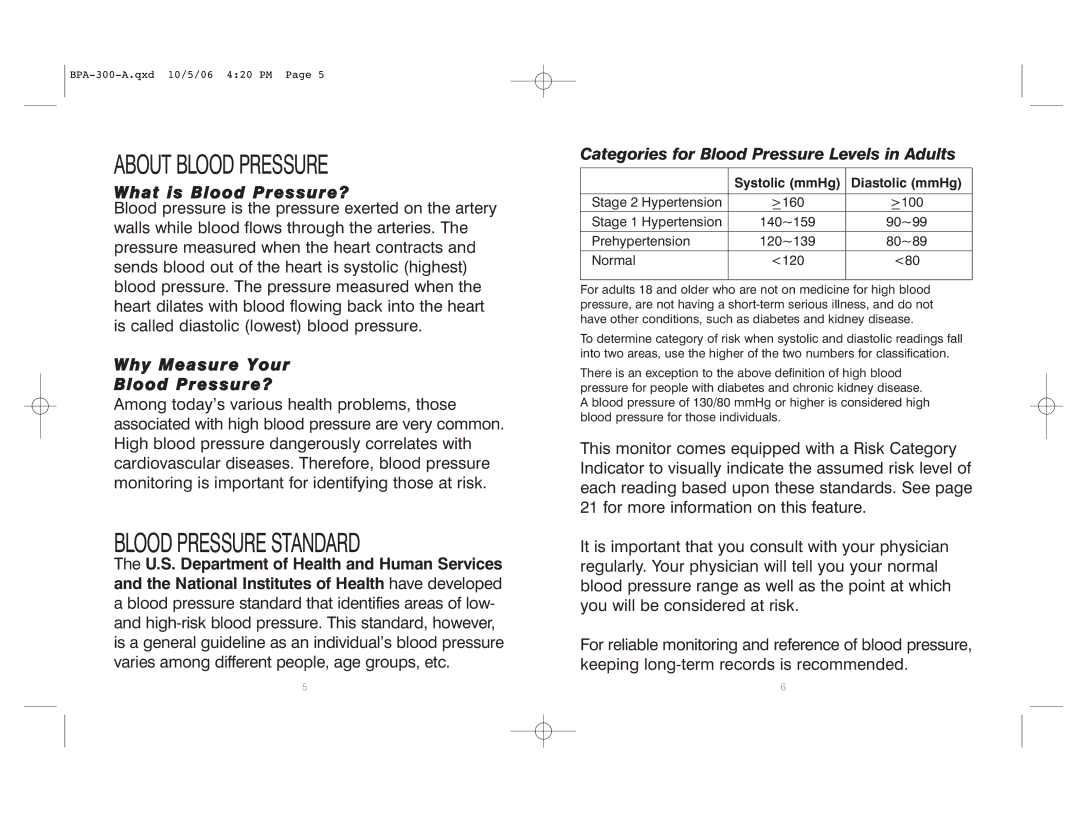
BPA-300-A.qxd 10/5/06 4:20 PM Page 5
ABOUT BLOOD PRESSURE
What is Blood Pressure?
Blood pressure is the pressure exerted on the artery walls while blood flows through the arteries. The pressure measured when the heart contracts and sends blood out of the heart is systolic (highest) blood pressure. The pressure measured when the heart dilates with blood flowing back into the heart is called diastolic (lowest) blood pressure.
Why Measure Your
Blood Pressure?
Among today’s various health problems, those associated with high blood pressure are very common. High blood pressure dangerously correlates with cardiovascular diseases. Therefore, blood pressure monitoring is important for identifying those at risk.
BLOOD PRESSURE STANDARD
The U.S. Department of Health and Human Services and the National Institutes of Health have developed a blood pressure standard that identifies areas of low- and
Categories for Blood Pressure Levels in Adults
| Systolic (mmHg) | Diastolic (mmHg) |
|
|
|
Stage 2 Hypertension | >160 | >100 |
Stage 1 Hypertension | 140~159 | 90~99 |
|
|
|
Prehypertension | 120~139 | 80~89 |
|
|
|
Normal | <120 | <80 |
|
|
|
For adults 18 and older who are not on medicine for high blood pressure, are not having a
To determine category of risk when systolic and diastolic readings fall into two areas, use the higher of the two numbers for classification.
There is an exception to the above definition of high blood pressure for people with diabetes and chronic kidney disease. A blood pressure of 130/80 mmHg or higher is considered high blood pressure for those individuals.
This monitor comes equipped with a Risk Category Indicator to visually indicate the assumed risk level of each reading based upon these standards. See page 21 for more information on this feature.
It is important that you consult with your physician regularly. Your physician will tell you your normal blood pressure range as well as the point at which you will be considered at risk.
For reliable monitoring and reference of blood pressure, keeping
5 | 6 |
